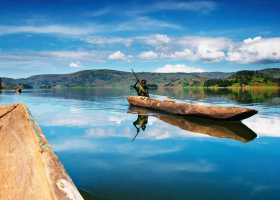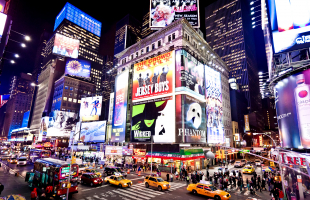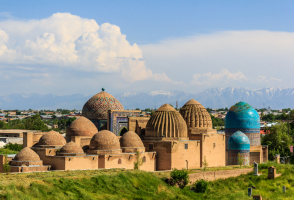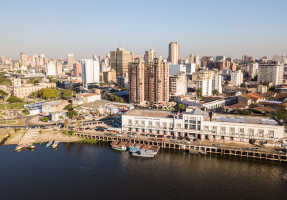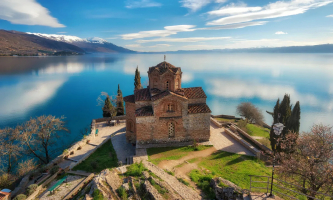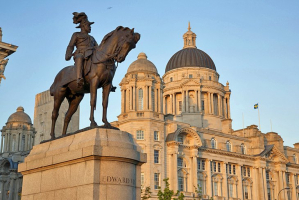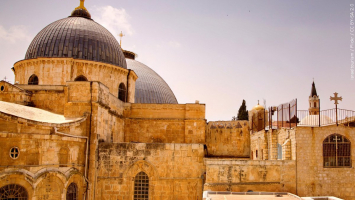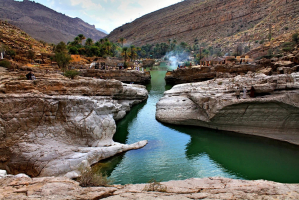Top 10 Reasons You Need to Visit Uganda
If you haven't gone to Uganda yet, you're missing out on a piece of your life narrative. East Africa is home to Uganda. There are various reasons to make time ... read more...to visit this landlocked country that connects Western and East African countries. Because of these several factors, Sir Winston Churchill designated Uganda as the "Pearl of Africa". Do you want to know if it's safe to travel to Uganda? Uganda is one of the safer African nations to visit; yet a lack of border enforcement has resulted in illicit drugs and anarchy throughout the country. So, why should you apply for a Uganda e-visa and visit Uganda? Let's find out now.
-
Some visitors to Uganda have had the opportunity to engage with some of the country's people while on Uganda safaris, and they can confidently state that they are culturally distinct. Uganda's borders are home to more than 50 tribes. The diversity of Ugandan tribes extends not only in quantity but also in behavior and culture. Uganda's tribe variety spans from warm and compassionate to hostile and violent.
The warmth and caring character of its inhabitants is one of the qualities that would entice you to explore a new place. A friendly community draws more tourists than a bustling and unpleasant one. The pleasant and warm-hearted people you will encounter in Uganda will make you want to come again and again. It is simple to learn about the Buganda people's culture and way of life when you are surrounded by friendly people. It is common to see Ugandans wave at visitors with pleasant and smiley expressions and words like 'Tukusanyukidde', a Luganda term meaning welcome.
The way they refer to white visitors as "Muzungu" whenever they see one makes you feel amused and more of a friend than a foe. Surprisingly, you may be able to obtain all of the knowledge you want from a group of local men and women who, in addition to understanding their culture so well, are eager to share it with anybody they trust. Children are not forgotten; they are excellent storytellers and may provide the most unforgettable experiences of your visit to Uganda.
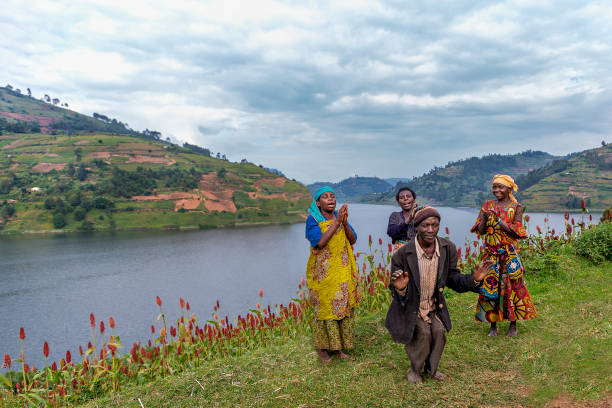
istockphoto 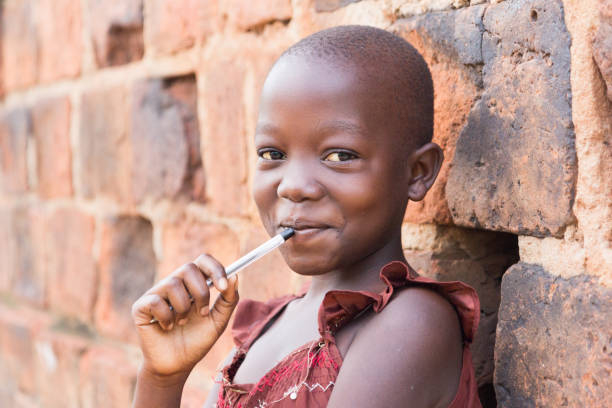
istockphoto -
If you needed fantastic Uganda travel advice, it had to include the stunning nature that greets you. Tourists frequently believe that because Uganda is located south of the Sahara, it must be dry or semi-arid. That is not correct. The nation is known for its lush greenery, which is home to numerous exotic species, including primates. The country's banana, tea, and coffee plantations provide a wonderful driving experience as you make your way into the country's interiors. If you are a scientist specialized on plants, there is a lot to learn. For example, woods with over 1000 blooming plant species and over 200 distinct tree kinds may be found in one of the settlements known as Bwindi. With such a diverse ecology, you will never miss the presence of animals, birds, and butterflies, among other species, when visiting Uganda.
Uganda stands out so much that you'll wish you could be there as soon as possible. When you arrive in Uganda, the primates seem to be the buzz of the town when it comes to wildlife. The country takes pleasure in having 20 primate species, the most of which live in the Kibale National Park. Kibale National Park has 13 primate species, including the recently discovered Dwarf Galago, making it Africa's national park with the most primate species. At Queen Elizabeth National Park, you will be met by herds of buffalos and water hippos, which is a breathtaking sight. Crocodiles, antelopes, and colourful birds will give you the breath-taking experience of an adventure. If that is satisfactory for you, the tree-climbing lions of Ishasha will complete your wildlife tour in a peculiar style.
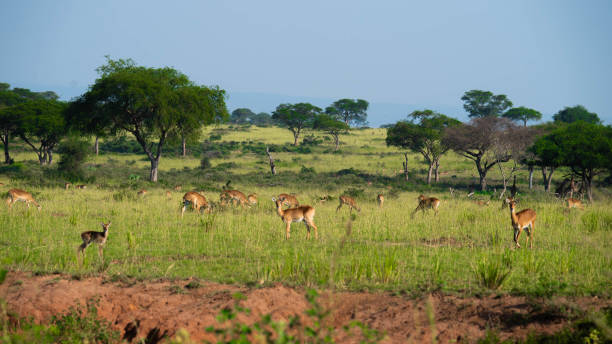
istockphoto 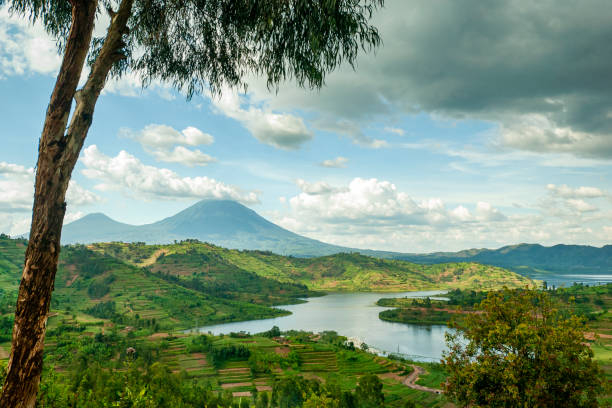
istockphoto -
Kibale National Park, a gorgeous stretch of lush tropical rainforest, has the largest population of primates in Africa. Its thirteen species include black-and-white colobus monkeys and mischievous grey-cheeked mangabeys, but everyone comes to see the chimps. On a day-long Chimpanzee Habituation Experience, you'll swing through the jungle with a troop of yelling and hollering chimpanzees, gathering in the trees to play, nap, or feast on figs. For a long time, Kibale has been the focus of chimp trekking. The trails are deemed ideal for tourists in any physical condition, and the area has the highest density of chimps in the world. Finding a chimp family may take either a few minutes or up to 6 hours of trekking.
You may even pick how long the walk should be based on how many people want to see the chimps that day. The monkeys descend as the noon sun sears through the higher canopy, sliding down vines and walking right past you. If such a close contact doesn't give you shivers, the sound of the males signaling each other will: they drum with such vigor on the buttress roots of enormous fig trees that the earth around you shakes. The Primate Lodge Kibale is located in the heart of the park, just a few minutes from the beginning of the tracking trailhead. The swanky restored cottages face out onto a forest wall, and there's a tree house for the brave.
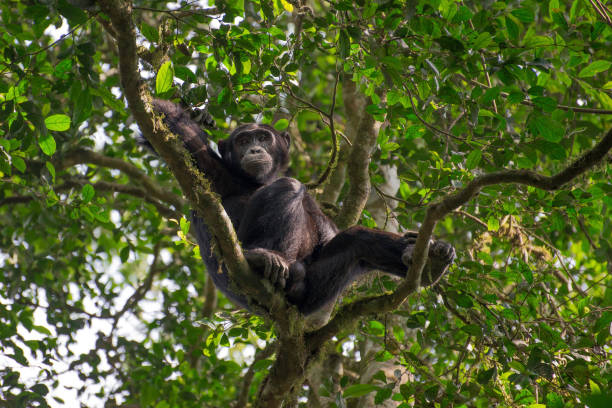
istockphoto 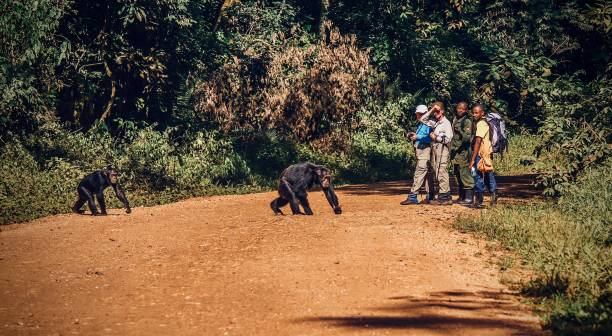
istockphoto -
Uganda is a beautiful country with a diverse climate. Because of its high height, the temperature is often mild. It also contains a large portion of Lake Victoria, including the outflow, which is the beginning of the Nile River. Or, more precisely, the largest White Nile tributary; the Blue Nile from Ethiopia is the second major tributary. As the White Nile flows from Lake Victoria, it crashes over a series of rapids and falls that are ideal for white water rafting. Dams on the Nile have resulted in the disappearance of several of the falls. Rafting expeditions used to last a whole day, but today they only last around half a day. But that half-day is exhausting! And most folks are ready to call it a day at that point away.
To raft the Nile, travel to Jinja, which is located on the beaches of Lake Victoria and the Nile's exit. Jinja is approximately about a two-hour drive from Kampala or the main international airport at Entebbe. There are plenty fantastic places to stay. In the morning, the rafting company will pick you up from your lodging. Jinja Base Camp (a terrific alternative if you're searching for a lovely lodging option in town) and Nile River Camp are where the two rafting businesses are headquartered (another stunning lodge with stunning views over the Nile). After breakfast, you'll be given the standard rundown of what to anticipate and advised to leave your phones at home (unless you want to gift them to the Nile). There is a special supply and rescue raft that will take all of your journey photos, which you can have for free later.
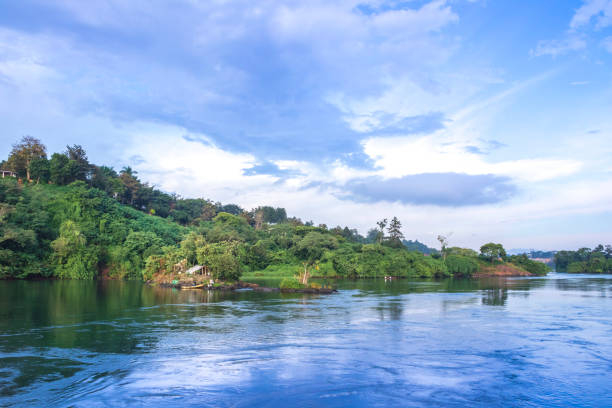
istockphoto 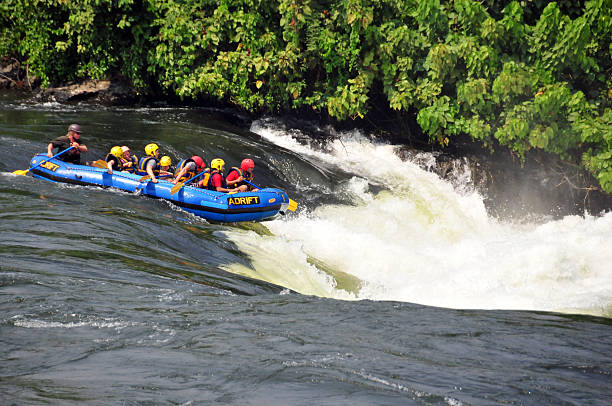
istockphoto -
The Karamojong people dwell in the southern half of the region in the north-east of Uganda, covering one-tenth of the nation. Anthropologists believe the Karamojong are descendants of a group that migrated from present-day Ethiopia around 1600 A.D. and separated into two branches, one of which moved to present-day Kenya and formed the Kalenjin group and Maasai cluster. The other branch, known as Ateker, moved westward. Ateker further separated into various groups, including Turkana in present-day Kenya, Iteso, Dodoth, Jie, Karamojong, and Kumam in present-day Uganda, also Jiye and Toposa in southern Sudan all of them are now known as the "Teso Cluster" or "Karamojong Cluster".
In the far northeast of the country, rubbing shoulders with Kenya and South Sudan, the diverse Karamoja area sees just a few travelers going for the lonely wildness of Kidepo Valley National Park. The Karamojong, a historically ferocious tribe of cattle-raiding pastoralists, live in the area, making them one of Uganda's most interesting peoples. Visits to a Karamojong manyatta frequently include cultural dance, or "high leaping", in the form of the more famous Masaai just across the border.
The Karamojong's major source of income is cattle herding, which is both social and culturally significant. Crop cultivation is a secondary activity that is only practiced in regions where it is feasible. Due to the region's dry climate, the Karamojong have historically practiced a form of pastoral transhumance, in which they transfer their cattle to nearby districts in search of water and pasture for their animals for 3-4 months out of the year. The Karamojong's connection with other ethnic groups is influenced by the availability of food and water.
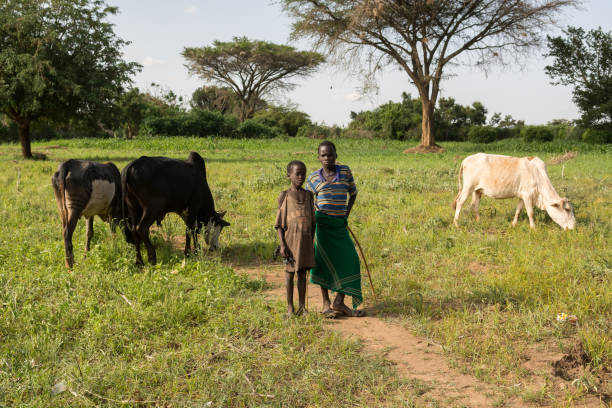
istockphoto 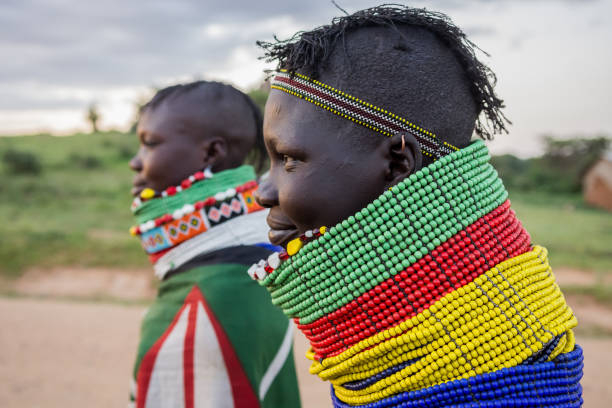
istockphoto -
Crater lakes were produced by volcanic activity 8000 years ago. A volcanic crater lake is a lake that developed as a result of a volcanic explosion. Uganda has several volcanic mountains, which cause eruptions. Unlike other volcanoes, which form cones at the summit of the mountain. These explosion craters spew lava, ash, and boulders into the surrounding surroundings, creating a vast basin in their wake. These basins gradually fill with water, becoming the crater lakes we know today. Crater lakes provide stunning vistas and a lush green environment. The majority of these crater lakes may be located in western Uganda. Crater lakes may be visited and are excellent photographic locations.
There are dozens of volcanic crater lakes in and around the Ndali-Kasenda area of western Uganda, but the jewel is the glittering Kyaninga. The lake is a mesmerizing granite blue, fringed with woodland and crisscrossed by gliding hornbills. It's semi-active, so despite being 225 meters deep in places, the water temperature is a nice 21 degrees. Add to it the fact that it is one of East Africa's few bilharzia-free lakes, and you have the ideal setting for some wild swimming. Kyaninga Lodge's beautiful, thatched bungalows are spread along a hill overlooking the lake. The spacious accommodations all boast breathtaking views, and local activities include an early morning Crater Walk and time spent with community elders at a neighboring farm.
Lake Katwe is located at the highest point of the Mweya Peninsula's Queen Elizabeth National Park. It is the major Crater Lake and Uganda's primary salt distributor. It is 3,265 feet deep and, because to its saltiness, does not attract any aquatic creatures. Elephants, buffalos, and flamingos may be observed near the baboon cliff. Lake Katwe is a good place to halt on your trip to Queen Elizabeth National Park. Enjoy a panoramic view of the Rwenzori Mountains, Lake George and Lake Edward, as well as the Kazinga canal. Your trekking experience will be enhanced by the Katwe explosion craters. The trip to the top of the globe will take you to additional crater lakes via towns and tea gardens. You won’t miss Lake Kitagata which is fed by salty water from a salty hot spring and the clear view of the Kyemango crater.
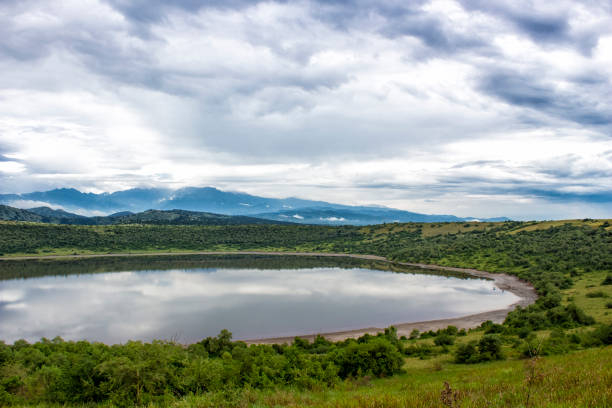
istockphoto 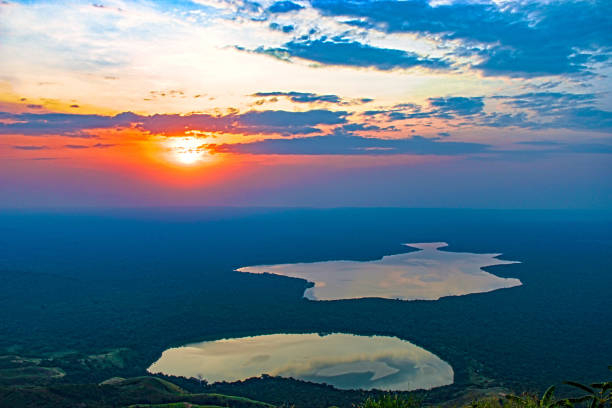
istockphoto -
Hiking Mount Rwenzori is without a doubt one of the most extraordinary adventure experiences Africa has to offer the rest of the globe. Hiking or climbing is a major attraction of all safaris to Uganda's Rwenzori Mountains National Park. Climbing the Rwenzori Mountains is a once-in-a-lifetime journey that takes adventurous hikers not only to the snow-capped peaks of the Rwenzori Mountains, but also through distinct plant life/vegetation zones.
The plant life of the Rwenzori Mountains of the Moon varies with height and includes lush tropical rain forests, montane forests, bamboo, and alpine. These make up the numerous environments that support the park's monkeys, reptiles, amphibians, and birds, to name a few. Mount Rwenzori is located in Western Uganda's Rwenzori Mountains National Park. It is located in the districts of Kasese, Bundibugyo, and Kabarole. Accessing Mount Rwenzori in the Rwenzori Mountains National Park from Kampala takes about 5-7 hours. The Rwenzori Mountains National Park is one of Uganda's ten national parks, and it was listed as a UNESCO World Heritage Site in 1994.
When Greek explorers attempted to identify the Nile's source, Mount Rwenzori was referred to as the Mountains of the Moon. Diogenes said that the Nile's source was a series of mountains known as the Mountains of the Moon by the inhabitants. The connection was made since Mount Rwenzori is snow-capped. However, the snow-capped whiteness has been diminishing and may eventually vanish.
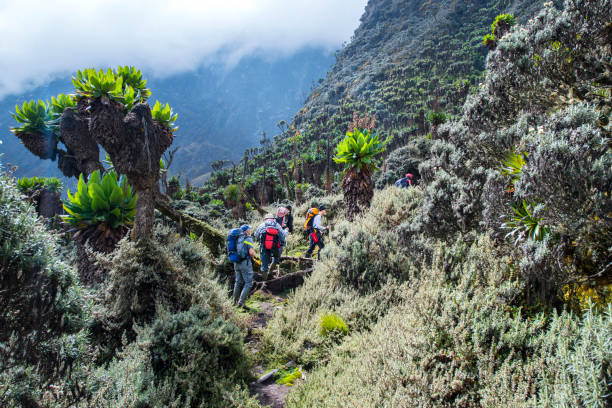
istockphoto 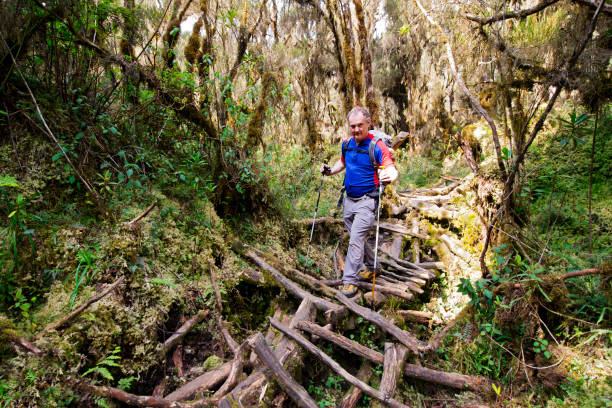
istockphoto -
The Kazinga channel is a 32-kilometer-long freshwater channel that connects Lake Edward to Lake George, its smaller neighbor. Boat trips are the finest way to get up up and personal with the wildlife that lives in and around the Kazinga Channel. You will view a variety of animals as well as one of the eleven fishing communities located inside the Queen Elizabeth National Park. Within Queen Elizabeth National Park, the canal is a renowned destination for animal tourists.
The Uganda Wildlife Authority and Mweya Safari Lodge are two independent boat ride companies. Both cruises are about $30 per person and last about 2 hours. Tourists may choose between Mweya Safari Lodge's comfortable ten-seater boat, The Sunbird, and its sleek twelve-seater boat, The Kingfisher. Both vessels have expert guides and staff, but the Kingfisher allows you to ride in luxury, with refreshments and sun umbrellas.
The channel is home to a diverse assortment of animals and birds, including one of the world's greatest concentrations of hippos (about 2,000) and several Nile crocodiles. Hippos are the world's third biggest land animal, and they can be hostile, so pay attention to your guide's advice. Expect to witness elephants, buffaloes, and over 100 different types of water birds, like the African Skimmer.
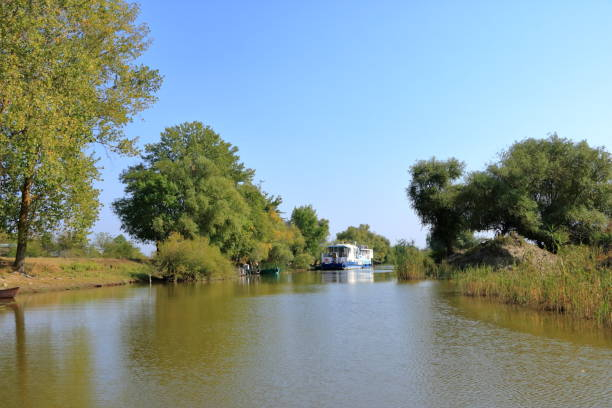
istockphoto 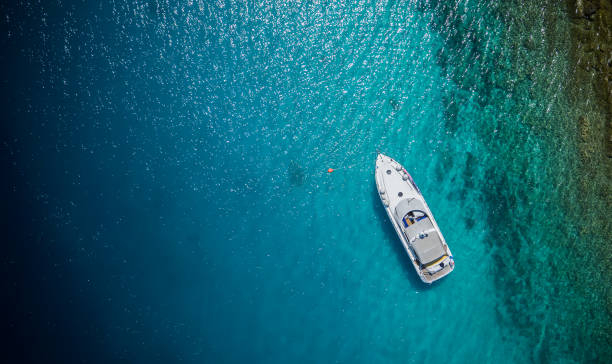
istockphoto -
A full day spent chasing mountain gorillas in Bwindi Impenetrable Forest is undoubtedly the most incredible wildlife encounter on the planet. You'll join park rangers and researchers on the Uganda Wildlife Authority's new Gorilla Habituation Experience as they track (and monitor) these powerful yet peaceful creatures, first locating their overnight nests before following a trail of broken branches and tell-tale silver hairs to the gorillas themselves. What follows are 3 or 4 hours of life-changing recollections as you witness massive silverbacks tearing apart and feasting on massive bundles of foliage while playful kids' roly-poly through the undergrowth.
The habituated gorillas in Bwindi are tracked from the Rushaga trailhead, where the personnel at the forest-facing Gorilla Safari Lodge are extremely pleasant and the cook prepares some of the greatest meals in Uganda. Permits for each of these mountain gorilla groups are available at the Uganda Wildlife Head Quarters in Kampala. Book at least three months in advance to ensure that the desired dates are available. January, February, June, July, August, September, and December are peak months for gorilla trekking. The months with the lowest temperatures are April, May, October, and November.
Gorillas may be followed at any time of year, however the drier seasons are preferable since some access routes are difficult to navigate during the wet season because trails are damp, slippery, and foggy. More specifically, visitors are recommended to carry a picnic, wear hiking boots, and be physically active in order to monitor mountain gorilla families; it is also suggested to maintain the park clean by not tossing dirt in it.
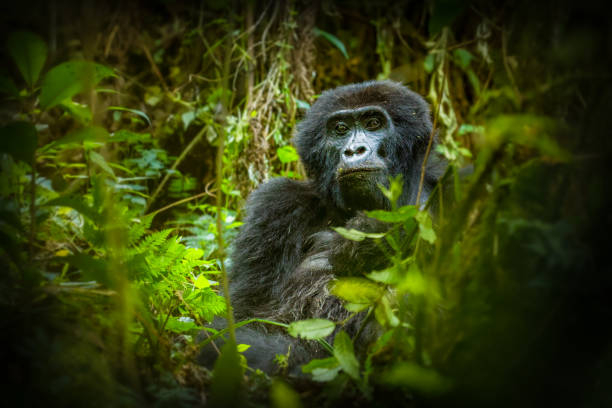
istockphoto 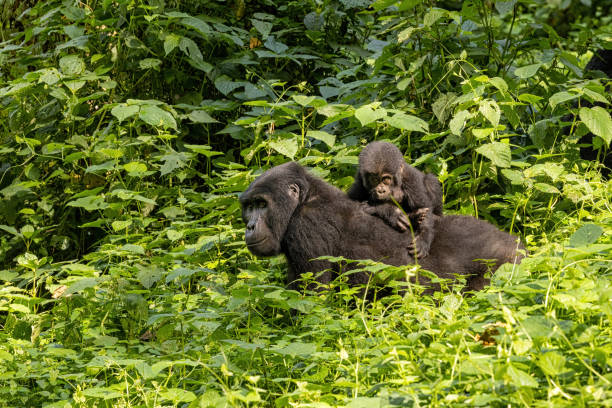
istockphoto -
Uganda is made up of different tribes and cultures that work together to provide tourists with a beautiful experience of seeing how the majority of these tribes live their lives. The Buganda people, who settled in central Uganda some 700 years ago, dominate the culture. Even now, the Buganda people continue to follow centuries-old customs, some of which you might like to learn about and experience.
The Bugisu and Busoga people will brighten your day if you relocate to Eastern Uganda. The Bugisu circumcision rites are important events that you should not miss if you are in the area. The Busogas, on the other hand, are passionate farmers, and you'd probably like to witness their exceptional sugarcane growing talents. The Acholi, Ik, Karamojong, Bunyoro, Tooro, Batwa, and Ankole are just a few of the tribes and civilizations you will encounter while visiting the Pearl of Africa.
As diverse as the country's culture is, so are its delicacies. Every tribe in Uganda has its own primary dish, which means you'll be spoiled for choice and conflicted between which meals to eat. One of the most popular meals is the Luwombo or Oluwombo, which originated in the late 19th century in the kitchen of King Kabaka Mwanga's personal chef. The Luwombo is now a favorite of both Ugandan monarchy and the general public. It comprises of cooked chicken, fish, or meat with vegetables such as carrots, mushrooms, and potatoes. Some plantain and peanut sauce are tagged along in the recipe to make the sweetness hit right at home when you take it.
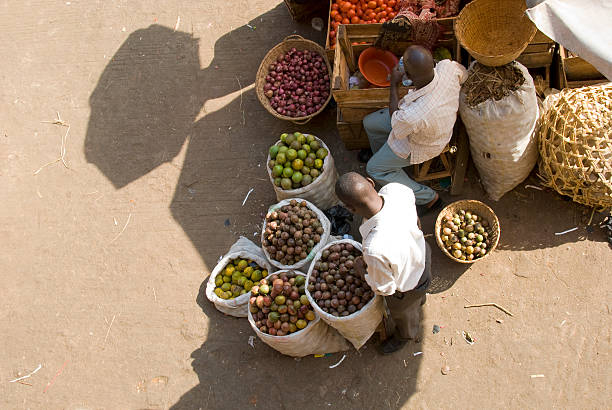
istockphoto 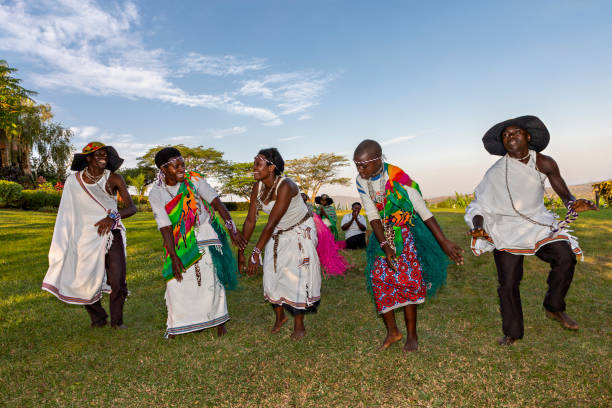
istockphoto












